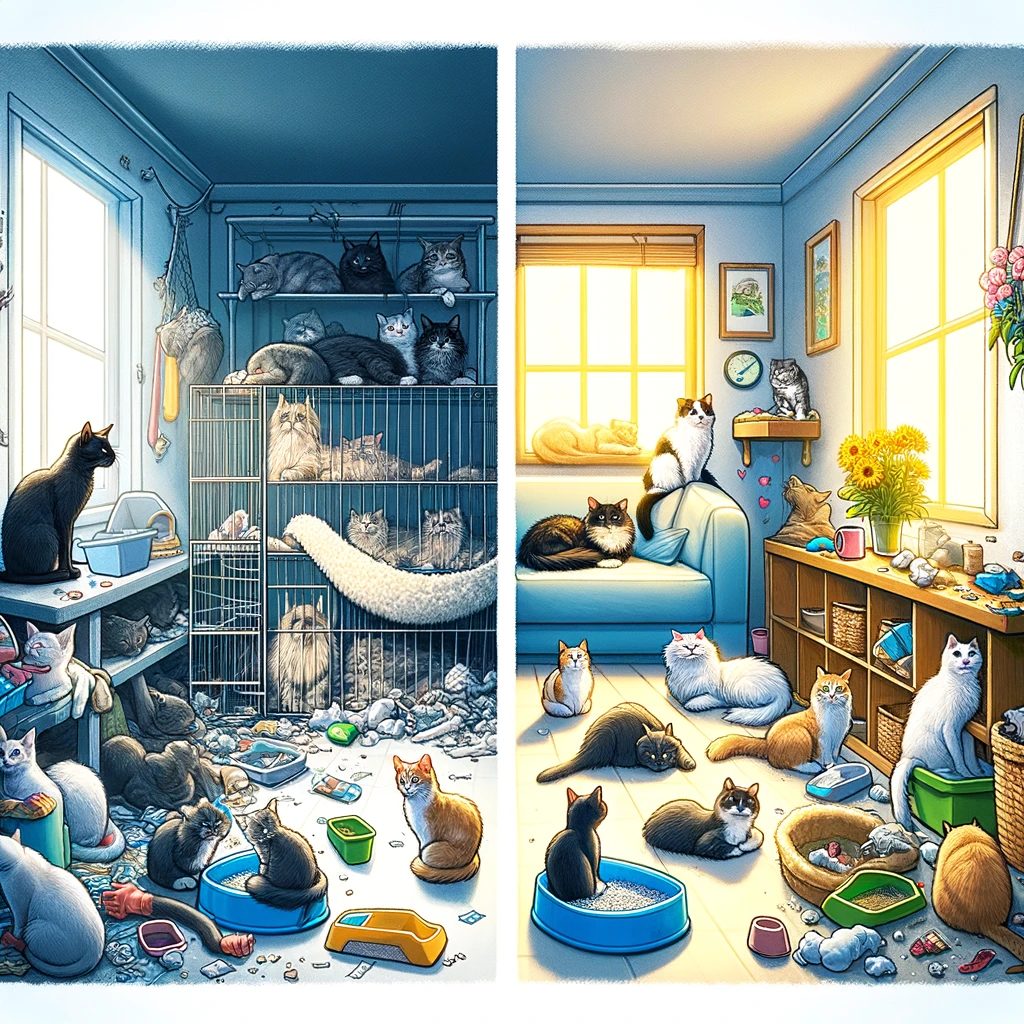When it comes to cat ownership, finding the balance between a loving home filled with feline friends and the excess of cat hoarding can be challenging. This article looks into this delicate topic, exploring when “many” becomes “too many,” and what constitutes hoarding.

Understanding the Love for Cats
Cats, with their mysterious charm and independent nature, are among the most beloved pets worldwide. They offer companionship, reduce stress, and bring joy to their owners. However, for some, the love for cats can transform into an overwhelming compulsion to own more than they can responsibly manage.
The Fine Line: Many Cats vs. Hoarding
1. The Number Game:
There isn’t a universal number that defines ‘too many cats.’ It varies depending on factors like the size of your living space, time, financial resources, and ability to provide adequate care. As a general rule, each cat should have its own resources (food bowls, litter boxes, sleeping areas) plus one extra.
2. Health and Hygiene:
A key indicator is the ability to maintain a clean, healthy environment. Overcrowding can lead to unclean conditions, spread of disease, and neglect of basic needs. If you can’t keep up with the cleaning, feeding, and healthcare, it might be time to reconsider the number of cats in your care.
3. Quality of Life:
Each cat deserves attention, affection, and adequate care. If the cats are neglected, overly competitive for resources, or show signs of stress or illness, these are red flags.
Hoarding: When Love Turns into a Problem
1. Definition:
Hoarding is characterized by the inability to let go of animals, even at the detriment of their and the owner’s well-being. It’s often associated with mental health issues like obsessive-compulsive disorder (OCD).
2. Signs of Hoarding:
- Overcrowded living conditions
- Inability to provide basic care (food, water, vet care)
- Denial of the inability to provide care
- Severe attachment, making it hard to surrender animals even when necessary
The Impact of Hoarding
1. On the Cats:
Hoarding leads to unsanitary conditions, malnutrition, unaddressed medical issues, and behavioral problems in cats.
2. On the Owner:
It can lead to social isolation, financial strain, and health hazards.
3. On the Community:
Hoarding can strain local animal shelters and rescue resources.
Getting Help
Recognizing the problem is the first step. Seeking help from mental health professionals, animal welfare organizations, and support groups is crucial. Responsible rehoming, spaying/neutering, and regular veterinary care can prevent hoarding situations.
Conclusion
Loving cats and providing a home for them is a noble endeavor. However, it’s vital to recognize your limits and the well-being of your pets. Understanding the red flags of hoarding and seeking help when needed is key to ensuring a happy, healthy life for both you and your feline companions.
For more in-depth information, please refer to the following authoritative resources:






Your article helped me a lot.